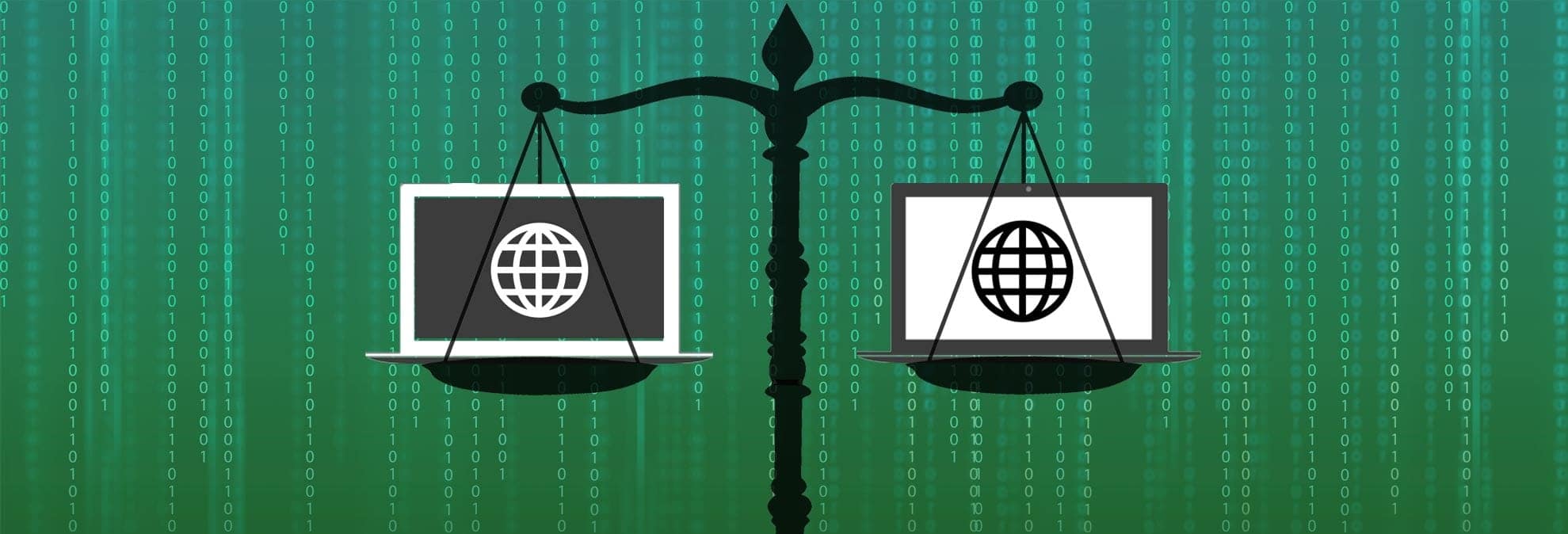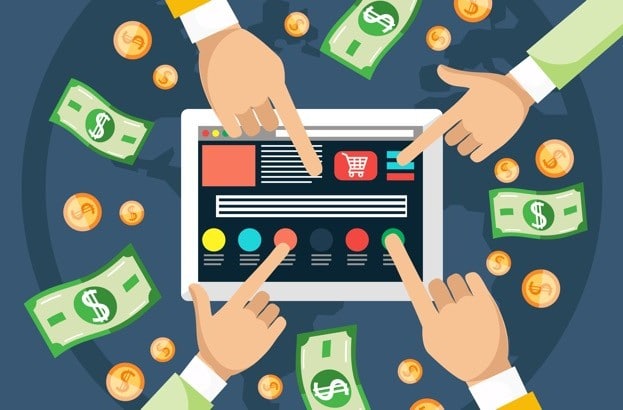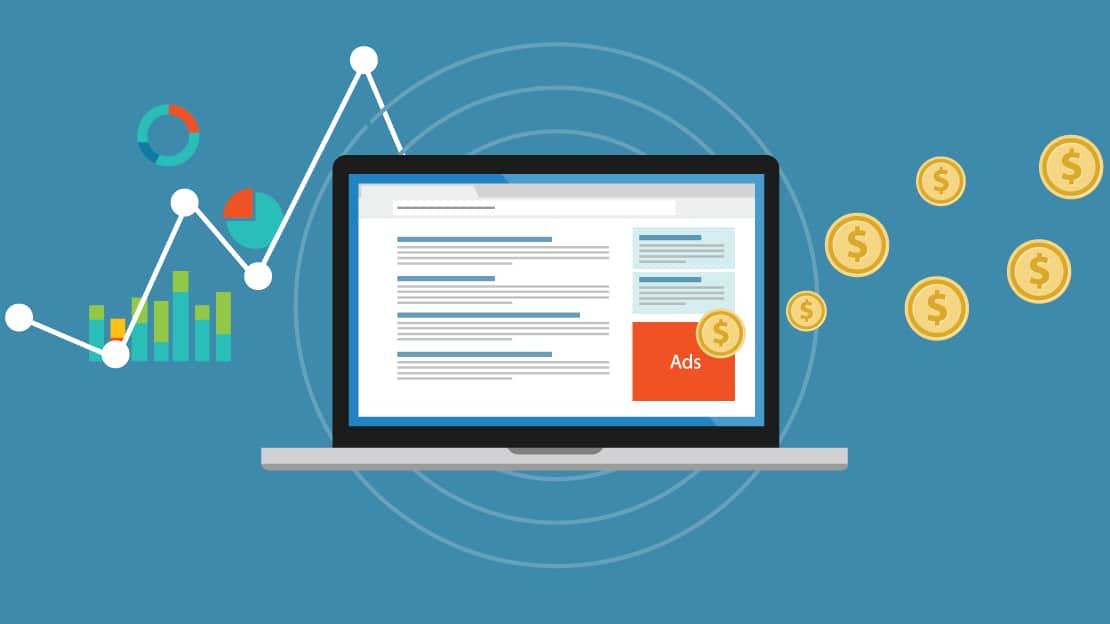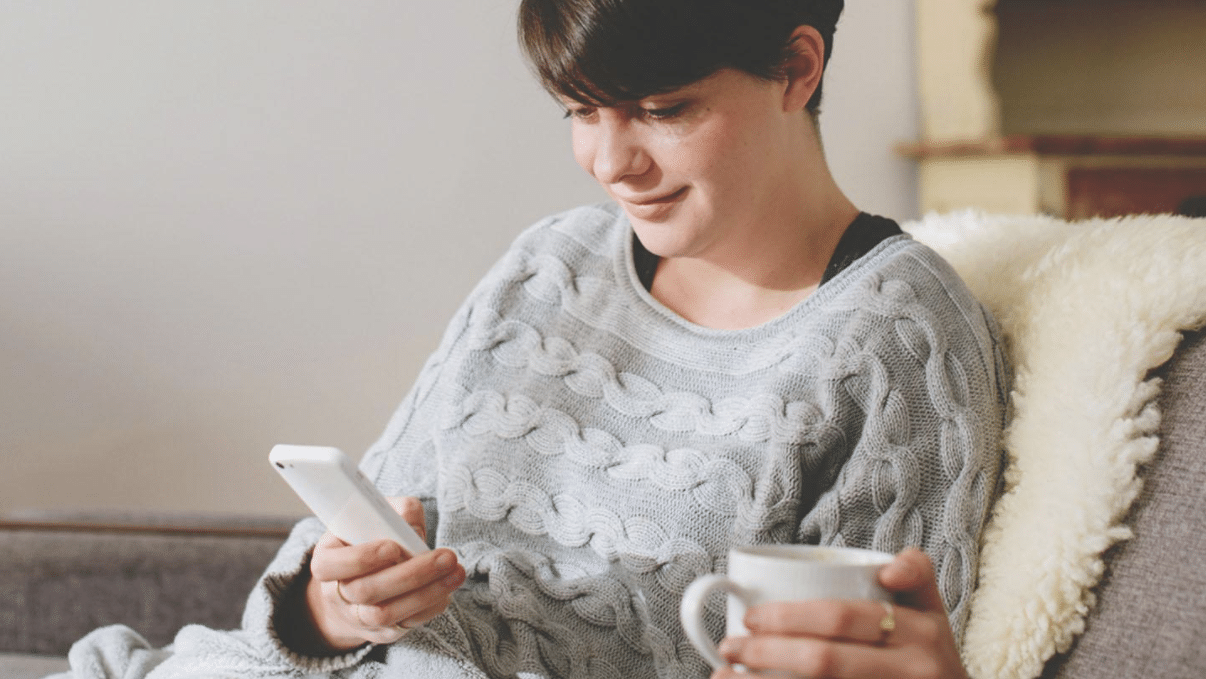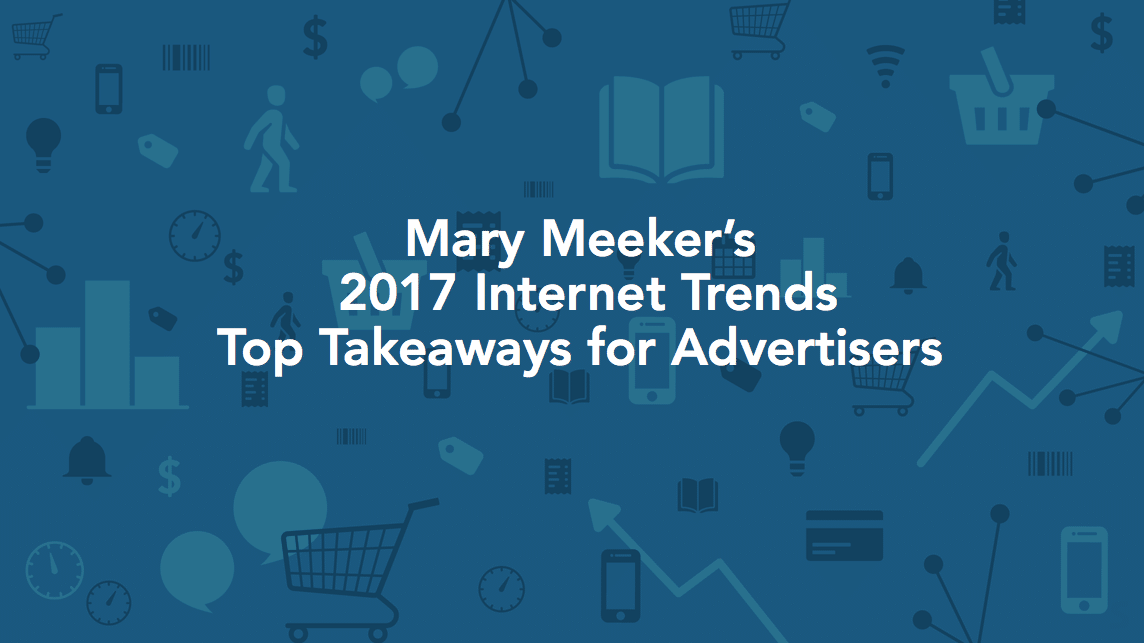Mobile commerce is rapidly becoming the go-to platform for people who want to shop online. Continue reading “Mobile commerce trends every marketing professional must know”
Category: Research
[Infographic]: Seasonal Shopping Trends 2017
They say the best predictor of future behavior is past behavior, which is why we have taken a look back at key behaviors our users exhibited during seasonal peaks throughout 2017.
In our latest infographic, we review what Shopkickers were most engaged with during important retail moments throughout the year. As 2018 trends already start to take shape, we look forward to seeing how these holiday trends will continue to grow and shift over time.

To learn more about how Shopkick can help you boost engagement during seasonal peaks, get in touch at partners@shopkick.com.
The fast food industry growth statistics that should shape your advertising strategies
Fast food is a high growth industry. Currently, the US market for fast food is worth about $200 billion and nearly half of all consumers get take out or fast food at least once a week. Continue reading “The fast food industry growth statistics that should shape your advertising strategies”
Continue the battle to defend net neutrality
With Black Friday and Cyber Monday just behind us and the busy holiday shopping season still very much in swing, our free and open Internet is still at risk. We have tried to fend off the attacks, but the Federal Communications Committee (FCC) is now calling for a December 14 vote to end Net Neutrality as we know it.
What is Net Neutrality?
Right now we have access to every website from every Internet connection in the world. This freedom of information is easy to gloss over and often taken for granted. After all, this is all we know – the Internet started this way and has always been this way. Net Neutrality is the basic principle that protects our free speech on the Internet.
What are we fighting for?
Today, this very fundamental right is under threat. The companies that provide the Internet network connections (telecom and cable companies mostly) want to charge more for our right to access certain websites depending on the content within them. This will mean that the Internet will become more like cable TV, and will offer premium ‘channels/websites’ for an additional fee.
Furthermore, the free and open internet is fueling economic growth with e-commerce growing to nearly $400 billion in retail sales last year. Our current net neutrality rules support innovation and free and open competition for retailers and entrepreneurs.
The FCC recently released a draft order that would end this open commerce. Without net neutrality, internet service providers will be able to favor certain websites and e-businesses, or the platforms they use to garner new customers. They can control the speed at which content is delivered to visitors based on how much the websites and businesses pay.
What can we do about it?
At Shopkick, we proudly join many major tech companies including Airbnb, Reddit, and Pinterest in the fight to save Net Neutrality. Together, we can stop censorship and corruption. Our recent letter to the FCC warned of this disastrous net neutrality reversal.
This is one step in the right direction, but everyone’s help is needed. Join the battle to save the Internet.
eBook: Advertisers’ Guide to Ad Fraud & Viewability
While total projected fraud losses have gone down year over year, there is still anywhere from $6.5 billion to $16.4 billion globally — estimates vary widely — that will be lost to ad fraud in 2017.
And that’s just fraud. Viewability represents further wasted ad dollars when real people may view a page that hosts an ad, but not actually see the full ad.
Marc Pritchard, CEO of P&G believes there is “at least 20 to 30 percent of waste in the media supply chain because of lack of viewability, nontransparent contracts, nontransparent measurement of inputs, fraud and now even ads showing up in unsafe places.”
In this eBook, we assess the current state of ad fraud, and share a few best practices to help advertisers avoid losing precious advertising dollars to deceptive practices.
Retail as marketing: redefining the retail experience
by Kristy Stromberg, CMO
Originally posted in Forbes as part of the Forbes Communications Council
In the pre-digital era, the relationship between brick-and-mortar retail stores and their customers was largely transactional— places to fulfill supply and demand. Yet as online commerce continues to grow exponentially, the role of the retail store is shifting from purely pragmatic to more experiential. Moving forward, the key to survival for retail stores may rely on their ability to act as a living showcase for products and brands.
Take Coach, for instance, which has made some radical yet effective changes in its approach. Last year, the company pulled its line of handbags and accessories out of 25% of its North American department store locations — choosing instead to focus energies on its own stores. Chief among those stores is the new Coach flagship location in New York, which elevates the ordinary shopping experience with special touches like a monogramming station (replete with emojis), a 12-foot dinosaur fashioned out of Coach leather pieces, and Made to Order Rogue (which gives shoppers the ability to create a bespoke Rogue bag).
Tesla and Nike are also among the companies leading the charge to create new associations with the traditional retail experience. For luxury car manufacturer Tesla, the dealership concept has made way for direct-to-consumer stores and galleries. Sleek interactive displays and on-site demos educate shoppers about the brand’s electric vehicles, while design studios enable would-be Tesla owners to configure their desired model (which they can then share on social media). As Automotive News put it, “The idea is less to sell a product on the spot than to let shoppers spend time with the brand.” It seems to be working: Reservations for Tesla’s Model 3 are reported at around 400,000.
As for Nike, its new concept store in Soho adopts an omnichannel-style approach to marry the company’s virtual and physical offerings. The goal? To offer dynamic tools for personalized performance. Among the in-store features: an instant personalization studio with laser engraving and custom printing capabilities and a fitting room with digital checkout and adaptive lighting (to mimic the feel of a yoga studio or evening run). Numerous “trial zones” offer inviting spaces for shoppers to test shoes, whether on a synthetic turf soccer field or on a basketball half court. For instance, the Nike+ Running Trial Zone transforms the treadmill into a 90-second run in Central Park or the West Side Highway via digital screen (fueled by real-time performance feedback).
The Shifting Role Of Stores
This new breed of experiential retail signals the movement toward stores as vehicles for marketing rather than just straightforward sales. Though e-commerce provides instant gratification through savvy search engines and easy one-click buying, there is still no replacement for the sensory touchpoint provided by a brick-and-mortar location where customers can touch, feel and evaluate the product in person. Retailers that recognize this distinction will certainly have an edge in the rapidly changing marketplace, in which the number of distressed retailers has tripled since the Great Recession, according to Moody’s Investor Service.
The proof? Highly successful online retailers such as Amazon, Fabletics and Warby Parker have all ventured beyond the digital landscape to open physical stores in recent years. Though it may seem counterintuitive in today’s rocky retail climate, these retailers are finding real value in reaching customers the old-fashioned way. According to Amazon’s Chief Financial Officer Brian Olsavsky, the retailer’s burgeoning chain of bookstores is “another way [for the company] to reach the customer and test what resonates with them.”
No matter how long a retailer has been in the brick-and-mortar game, its longevity will depend on not only its ability to create enhanced experiences for customers but its unique take on how to keep them coming back. One shining example is Nordstrom, which is slated to open 17 new stores this year (amid a landslide of closures for other department stores). The retailer has long been hailed for excellent customer service, from hassle-free returns to hand-delivering items to homes. Whole Foods has also succeeded in this vein, going to great lengths to ensure an inviting environment with colorful displays and carefully-curated playlists.
This “feel-good” takeaway is yet another aspect that is largely exclusive to the real-life shopping realm, and it goes hand-in-hand with shaping the new face of retail. Now is the vital time for retailers to embrace these realizations, as many shoppers still prefer buying from physical stores over shopping online — and forward-thinking, experientially-minded retailers have a shot at keeping it that way.
Webinar on demand: Determining signals of purchase intent
In this webinar on demand, Moat VP of account management Callie Reynolds joins Shopkick regional VP Jenny Campbell to discuss how advertisers can protect themselves from invalid traffic and viewability issues to focus on the metrics that matter.
You can watch the webinar here.
It’s critical for marketers to be able to understand the actions that consumers take across their purchase journey that ultimately lead to conversion and sales. However determining these signals in digital and mobile marketplaces fraught with viewability challenges and ad fraud makes this task even more difficult.
Ad fraud is still a major concern for most advertisers, as the environment is complex and potential costs are considerable. Ad measurement firm Moat has found that about half of all digital ads aren’t considered viewable. And according to Forrester Research, US fraudulent or non-viewable ad costs totaled $7.4 billion last year, with that figure projected to rise to $10.9 billion by 2021.
This issue goes well beyond traditional display formats. With the explosive popularity of video ads, how can advertisers be sure that they are being seen (and heard) by the right people?
This webinar on demand with Shopkick and Moat examines the valid digital and mobile signals that lead to both online and offline purchases.
Watch to learn how to:
- Navigate the fragmented advertising environment to avoid wasted spend on non-viewable or fraudulent ad buys
- Understand the unique ad challenges impacting desktop, mobile web and mobile apps
- Incorporate video best practices to capture consumer’s attention and achieve key brand metrics
- Detect valid digital and mobile signals that lead to both online and offline purchases
Navigating the complex laws of alcohol advertising
The marketing of alcoholic beverages and products can be extremely complicated. Not only must brands confirm they are marketing to consumers that are of age, but they also have to navigate different state laws and requirements. Today, in the US, each state (and even individual counties within the states) have specific laws regulating the marketing, sale, and shipping of alcohol to its residents.
These laws date back to the period of after the end of Prohibition in 1933, when federal and state laws created a three-tiered system for manufacturing, distribution, and sales of alcohol. First, manufacturing: licensed producers are the only entities who may make wine, beer, and spirits. These licensed producers may then only sell alcohol products to licensed distributors, and then these licensed producers must only sell these products to licensed retailers. After this, licensed retailers may then sell alcoholic products to consumers. This system may seem convoluted today, but at the time, politicians wanted to ensure each portion of the alcohol industry acted entirely independently. This system gave local politicians the ability to grant licenses only to producers, distributors, and sellers they deemed “fit”.
The complicated nature of these various laws can cause many companies to give up and avoid marketing alcohol altogether. However, location-based technology enabled by mobile now solves many of these challenges, and can achieve great results for marketers of alcohol. These solutions can deliver location-specific messages and offers, by targeting consumers who live in the appropriate states and counties that allow consumers to receive incentives for scanning or buying alcohol. To understand how complex this is, let’s look at a couple of examples:
- In Pennsylvania, the relevant law states “it shall be unlawful … for any licensee … to offer or give to trade or consumer buyers any prize, premium, gift or other inducement to purchase liquor or malt or brewed beverages […].”
- In Georgia, the relevant law states that “no Manufacturer, Producer, Shipper, Importer, Broker, or Wholesaler, nor their employees, agents, Representatives, or anyone acting on their behalf, shall directly or indirectly […] Give or offer to give […] things of value in connection with the sale of Alcoholic Beverages […and…] cooperative advertising and incentive programs shall not be deemed to constitute a [prohibited] partnership agreement.”
At Shopkick, it is our priority to understand these complex and varied laws so we may offer incentives to our consumers based on where they live, what stores they visit, and what type and brand of alcohol they purchase. Shopkick customizes each marketing program to offer incentives, specifically “kicks,” for scans of alcohol in one state and kicks for purchases in another. So, although a consumer may live in a state where we may advertise and offer kicks for scanning an alcoholic product, we may not be able to offer kicks for purchasing an alcoholic product, or vice versa. This specialization allows Shopkick to quickly set up customized marketing campaigns for alcohol (and other products) even in the face of the complex marketing laws.
We work with many wine and spirits manufacturers across the country to navigate these laws, and have seen great results in rewarding consumers for engaging with their brands and products both online and in-stores.
Contact us to learn more about how Shopkick alcohol programs work.
Shopkick named top app in ComScore’s 2017 Mobile App Report
ComScore released its annual US Mobile App Report that charts trends in the mobile app landscape. The report explores the dynamics of mobile media consumption, breaking down app usage and behavior by audience segments, and uncovering other insights to help advertisers and publishers take advantage of these trends.
One of the major takeaways from the report is that apps are dominating consumer’s digital media habits, with 57% of consumers’ time spent using digital media now taking place in mobile apps. Consumers are also fairly established in which apps they use, with most of their time concentrated in their top apps. 90% of mobile app time is spent in consumer’s top five apps, and 50% of time is in their top app.
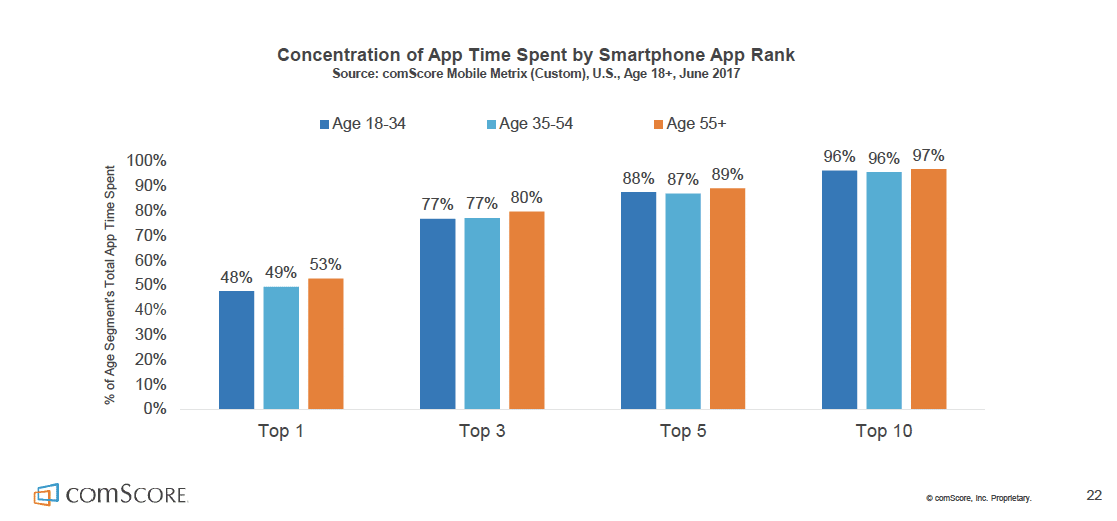
With consumers’ time being concentrated in a small number of their favorite apps, it’s critical for marketers to understand where their target audience spends time in order to effectively reach and engage them.
While the most popular apps by time spent are predominantly Facebook and Google, a more nuanced look at the top indexing apps by age segment reveals social and entertainment affinity among younger adults, and news and retail affinity among older adults.
Shopkick is reported as one of the top apps for Gen Xers (35-54), the age segment that is most likely to download and use retail and shopping apps.
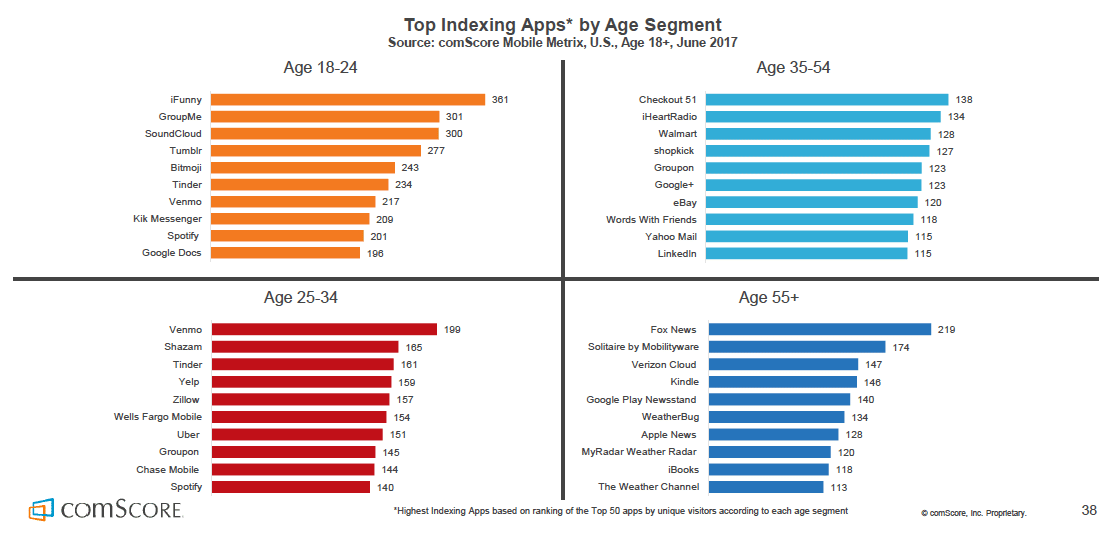
Shopkick was also identified as one of consumers’ top hidden gems, defined as “the one app that you love, but that you think is not widely known or not used by many people, but think it should be.”
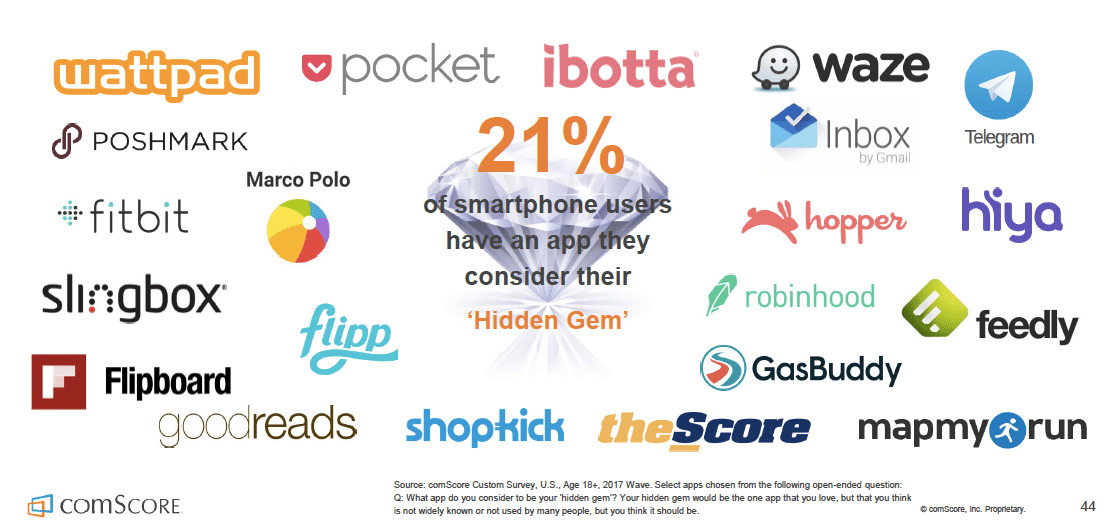
Read the full Mobile App Report here
Impact of video on in-store activity
In today’s attention-based economy, marketers must seek out advertising formats that their target audience will engage with and not block or skip. As consumers have become skillfully adept at evading interruptive marketing messages, some advertising formats stand out as particularly effective at capturing consumers attention and driving key brand metrics. Two formats in particular, video and incentive-based rewards, are consistently ranked among the most positive forms of advertising, and viewed most favorably by consumers.
Video is one of the most engaging ways to reach consumers and capture their attention to tell a brand’s story. In fact, the rise of video advertising can be attributed to the fact that short-form video is a true win-win for consumers and marketers. Consumers get branded content that is more dynamic, educational and entertaining while marketers have a greater opportunity to engage, tell their brand or product’s story and build meaningful relationships.
On the Shopkick platform, we’ve found video to be a particularly powerful driver of brand metrics across the purchase journey. While planning their shopping trip or building their list, users can watch a branded video at home or on the go, and be rewarded with kicks, our in-app currency. After viewing, they can save the featured product to their shopping list. Engagement rates for video are much higher than industry standards, as the incentive for viewing drives up Shopkick average completion rates to 94%, compared to industry average of 68% (IAB 2017).
On Shopkick you can connect the viewing of the video to in-store activities like product engagements and purchases. Users are incentivized to visit the product in-store, and are rewarded for picking up the product at shelf. At this point, users who have watched the video are already aware of the product attributes and benefits, and with the product in-hand, we’ve found they are much more likely to purchase. For example 24% of unique scanners watch the brand video and 32% of receipt uploaders watch video.
An example of how video works in the Shopkick platform:
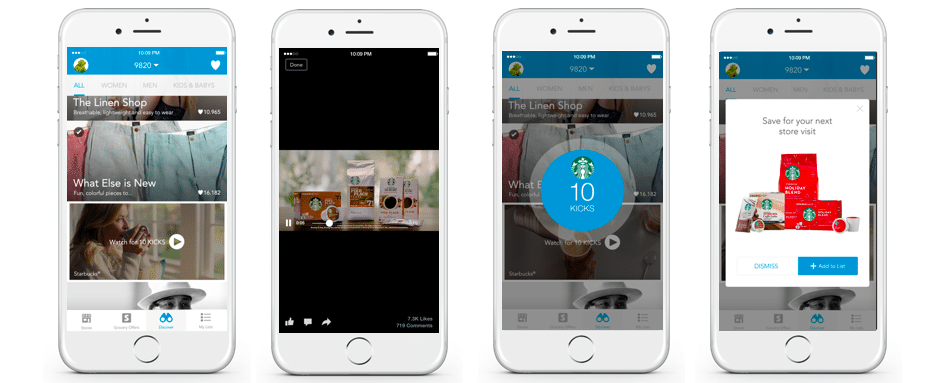
To reach and engage their target audience, marketers must understand the types of content consumers seek and deliver it in the right context to build awareness and ultimately drive sales.Reaching consumers before they get to the store is critical to establish awareness, affinity and get on the shopping list, ultimately increasing likelihood of conversion and purchase.
To learn more about Shopkick Video, contact us today!
Top takeaways from Mary Meeker’s 2017 Internet Trends Report
Mary Meeker’s annual Internet Trends Report is essentially required reading for anyone who works in tech and advertising. In 355 slides, she analyzes relevant trends in internet adoption, advertising + commerce, media + entertainment, gaming, enterprise healthcare, China, India and startups.
In this post, we break down some of the key trends that advertisers need to know:
Meet consumers where they spend their time
The shift to mobile continues as consumers increasingly concentrate more of their media time in mobile at the expense of other channels. However, advertising dollars have not kept pace resulting in a $16 billion opportunity based on the gap between consumer time spent in mobile and advertising dollars spent in mobile. It’s critical for marketers who seek to build relationships with consumers to meet them where they are spending their time. In today’s advertising economy, consumer attention is the new currency.
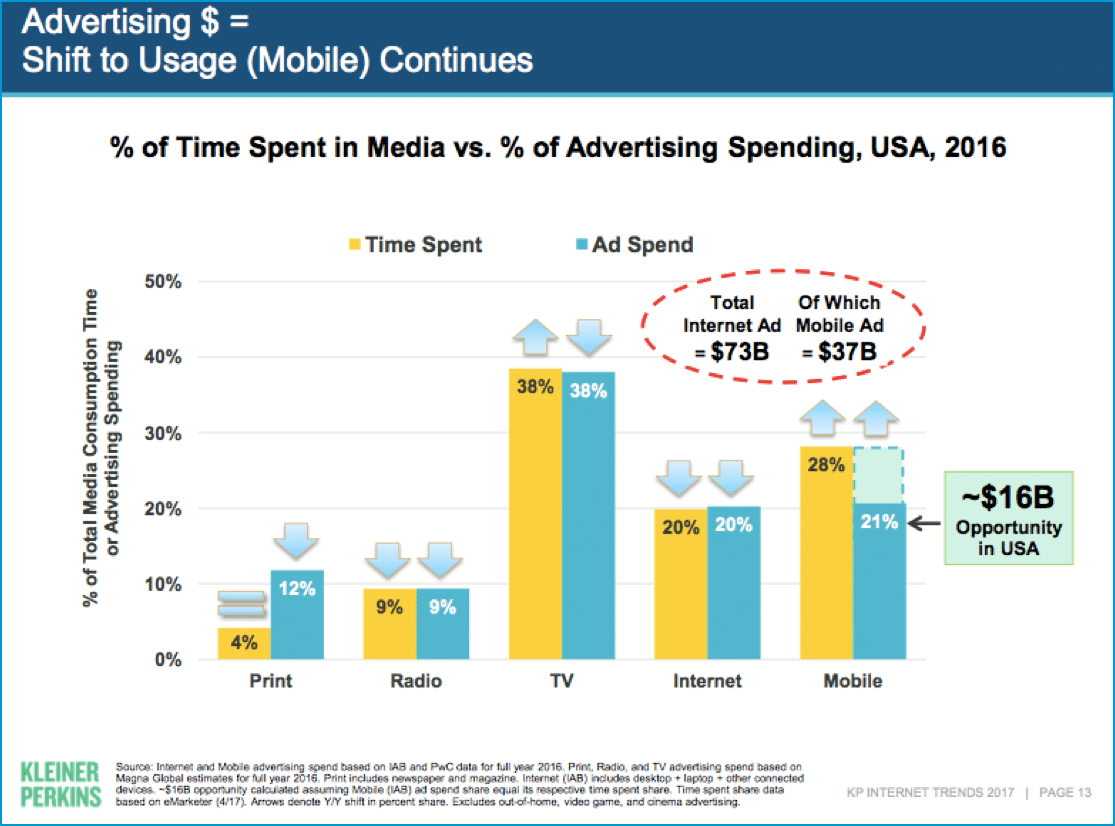
Challenges in cross-channel ad measurability
While advertisers rely on measurable engagement metrics, there are still widespread challenges in measuring ROI and offline metrics like conversion and revenue. Before even measuring sales, most marketers and platforms are still trying to figure out if and how their digital activities drove in-store visits. For example, Snap recently acquired PlaceIQ, and Google have Facebook are now attempting to track store visits and sales through POS data. In 2016, Deloitte reported that digital’s influence on in-store sales surpassed 50%, influencing 56% of all in-store retail sales. Yet understanding this influence on a shopper-level is still a challenge for most retailers. In fact, 67% of retail executives said their greatest obstacle in offering an omnichannel experience is tracking customer analytics across channels. See more on how Shopkick measures online to offline attribution here.

Understand the ads that consumers want
Consumers increasingly view non-native advertising formats as both interruptive and annoying, which is why ad blocking software penetration continues to grow. Already close to 20% of US consumers have it installed and that number is much higher in developing markets like China and India. However, there are ad formats that are viewed more positively, particularly incentive-based video ads tied to mobile app rewards, social click-to-play and skippable pre-roll. For example, 68% of consumers view mobile app reward video ads as positive vs just 19% for mobile app pop-up video ads. This has implications for viewability and engagement going forward, and incentive-based video will continue to grow with consumer favorability.
Shopkick has seen tremendous results with rewarding users for watching video on our platform. Our engagement rates are significantly higher than industry standards, with a 93% completion rate vs. 68% (IAB). Video is also a powerful driver of in-store activity, increasing both product engagements and purchases. See a case study from Barilla on the power of incentive-based video on driving in-store metrics here.

Incorporate gamification tactics to optimize loyalty and engagement
Mary Meeker examines best practice gaming mechanics like repetition, planning workflows, solving puzzles, completing projects, leveling up, and competition. Successful non-gaming companies have also incorporated these tactics into their products to optimize consumer learning and engagement.
Shopkick is a shopping rewards program, and like many other loyalty programs, we have incorporated conventional gaming tactics into our app to keep our users active, engaged and retained. As a result, users report feelings of great satisfaction and accomplishment after having earned rewards and accumulated kicks. Advertisers should incorporate these mechanics into marketing strategies on a campaign level or when selecting advertising partners. These tactics can be leveraged to keep consumer’s attention, keep them engaged, and keep them loyal.

To read the full Internet Trends Report, view here.
eBook: 5 Proven Marketing Strategies for Challenger Brands
The rapid adoption of digital technologies and evolving shopping behaviors are transforming the CPG industry. Never before have smaller, ”challenger” brands had this level of opportunity to quickly respond to changing consumer preferences and bring their products to market both online and in-stores. However, with that opportunity comes many new challenges. Challenger brands must compete for wallet share against the more established corporations with big budgets, extensive distribution and established brand equity, as well as against many of the ”new” players that are marketing themselves similarly. How can challenger brands reach new customers to build awareness, drive engagement and ultimately sales of their products in the face of with limited marketing budgets and big competition?
Here are 5 proven marketing strategies for challenger brands:
1. Reach new customers before they even enter the store with engaging video content
2. Communicate with customers in-store and stand out at shelf
3. Incentivize purchase without eroding your profit margin by offering rewards not discounts
4. Gamify the shopping experience to keep customers coming back
5. Effectively track an omnichannel campaign for deeper consumer insights
To learn more, check out our eBook.


![[Infographic]: Seasonal Shopping Trends 2017](https://www.shopkick.com/wp-content/uploads/2017/08/alcohol-advertising.jpg)

